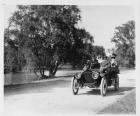|
Re: Lying Torque Wrenchs
|
||||
|---|---|---|---|---|
|
Home away from home
|
To calibrate, simply find some arrangement that lets you torque on the end of the wrench. Easy if you have a welder: simply weld an old socket to a bar. Another one is to jam nuts on a bolt; have the socket on the torque wrench and counter it with a box wrench. Just hold the other wrench and the union of the two to push the torque wrench against a scale. Note the value when it clicks, measure the distance on the torque wrench, and do the math.
In my somewhat brief experience, as long as the torque wrench zeroes properly, it's usually fine. (Adjuster loses all tension when you dial it to zero.) This is because they use Hooke's spring law as the principle of their operation. There are other modes of failure/inaccuracy but they are rarer. P.S. I should buy one of the digital gauges. I have a HF click type wrench that drifted like 40 lb•ft off within just months.
Posted on: 2023/11/5 20:54
|
|||
|
1955 400 | Registry | Project Blog
1955 Clipper Deluxe | Registry | Project Blog 1955 Clipper Super Panama | Registry Email (Parts/service inquiries only, please. Post all questions on the forum.) service@ultramatic.info |
||||
|
||||
|
Re: Lying Torque Wrenchs
|
||||
|---|---|---|---|---|
|
Home away from home

|
Quote:
This is what I'm worried about. I have a feeling that mine is on the high end. I might just pick up some used beam types for cheap, plus a decent (sub-$200) digital wrench. I prefer to get things as close to correct as possible.
Posted on: 2023/11/5 22:22
|
|||
|
||||
|
Re: Lying Torque Wrenchs
|
||||
|---|---|---|---|---|
|
Home away from home
|
I prefer the beam wrenches because you can see how close you are to your torque spec.
For instance, when re-tightening head bolts, are they all consistently 10 lbs under or are some 5 and some 15? They do have the disadvantage that they are not ratcheting wrenches so getting enough clearance to turn a nut is sometimes a problem.
Posted on: 2023/11/6 10:37
|
|||
|
||||

 TorqueWrench08.pdf
TorqueWrench08.pdf






